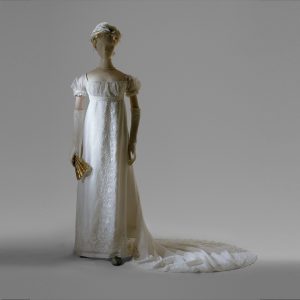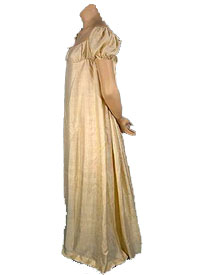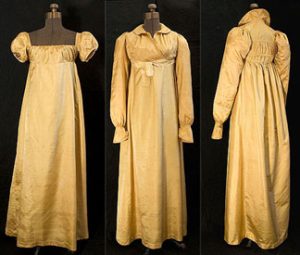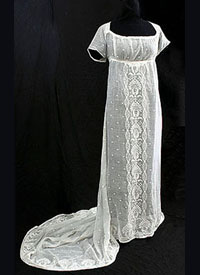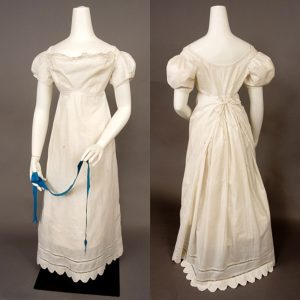The fashion canvas of the 18th century changed radically as the 19th century began; simpler, lighter brushstrokes were applied. With its fluid lines, fashion began to mimic classic Grecian drapery. Bodices were minimal, cut to end under the bust and achieving a high waist that defined the silhouette. Necklines were predominantly low. Sleeves could be long or short.
The fiddle-back bodice—with side, back, and shoulder seams placed to form a diamond shape—was typical of this period. The use of tiny piping to finish seams began.
Dresses generally opened in the front, with pins or drawstrings as closures, while their skirts had side openings, if any at all. The effect was one of simplicity. White was the most popular color, and any applied trimming was used sparingly.
Fabrics were lightweight, soft drapery, with embroidery and details that did not interrupt the aesthetic flow. Outerwear consisted of Spencer jackets (waist-length jackets named after Lord Spencer), pelisses (a type of sleeved cloak), and the ubiquitous long shawl.
Written by The Vintage Fashion Guild
